

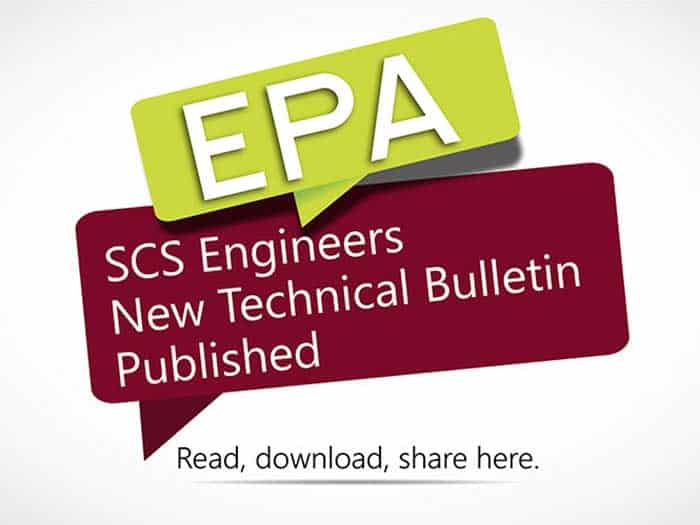
PFAS CERCLA Exemption Letter Submitted Electronically to: https://www.regulations.gov
The Honorable Michael Regan, Administrator U.S. Environmental Protection Agency
Re: Addressing Per- and Polyfluoroalkyl Substances in the Environment, Advance Notice of Potential Rulemaking (ANPRM); Docket ID No. EPA-HQ-OLEM-2022-0922
Last year, NWRA and SWANA submitted comments on EPA’s proposal to designate perfluorooctanoic acid (PFOA) and perfluorooctane sulfonic acid (PFOS) as CERCLA hazardous substances. They also submitted comments in May in response to this ANPRM jointly with other “passive receivers” of per- and polyfluoroalkyl substances (PFAS). Both associations reiterate and append those comments to what is contained in this letter, urging EPA to ensure that landfills and other passive receivers are afforded relief from CERCLA contribution litigation prior to designating PFAS as hazardous substances.
More Information:

Class VI Underground Injection Control Well Permitting is Part III of our video series on Carbon Capture and Storage. Cutting through red tape and regulatory barriers is key to keeping the permitting process on track for your Class VI UIC well. There are steps you can take to prevent delays and meet key regulatory requirements.
Watch the SCS’s Carbon Capture and Storage webinar to learn more about each phase of the permitting process and how to keep each running smoothly. Carbon capture and storage is an EPA-approved technology companies are exploring to help them reduce their greenhouse gas emissions, and understanding the permitting process is key as you plan your project. In this chapter you’ll get answers to these questions:
Your business does not have to be in Illinois to learn from these educational webinars. If you’re ready to explore the benefits of carbon capture and storage but concerned you’ll get delayed by the ins and outs of the Class VI UIC well permitting process, watch Patty Herman’s video to learn more, or contact your local SCS office for a consultation.
 Patty Herman graduated from Southern Illinois University Edwardsville with a Master of Science in Biological Sciences. Working in diverse and unique habitats enhances her awareness of the ecosystem’s fragility and the need to protect it, especially for agencies during the permitting process. During graduate school, she was selected by the Illinois Department of Natural Resources for the Natural Heritage Residency program. The residency provided exposure to resource management in both public and private sectors, interacting with many federal, state, and local agencies, as well as NGOs and landowners. She writes and executes management plans and permits using her intensive experience in land management techniques. She has the unique ability to find common ground with stakeholders, agencies, and the public in safe land management for industrial and manufacturing.
Patty Herman graduated from Southern Illinois University Edwardsville with a Master of Science in Biological Sciences. Working in diverse and unique habitats enhances her awareness of the ecosystem’s fragility and the need to protect it, especially for agencies during the permitting process. During graduate school, she was selected by the Illinois Department of Natural Resources for the Natural Heritage Residency program. The residency provided exposure to resource management in both public and private sectors, interacting with many federal, state, and local agencies, as well as NGOs and landowners. She writes and executes management plans and permits using her intensive experience in land management techniques. She has the unique ability to find common ground with stakeholders, agencies, and the public in safe land management for industrial and manufacturing.
Additional Resources:

On July 1, 2023, the Illinois Environmental Protection Agency (IEPA) posted and updated General NPDES Permit No. ILR00 for Industrial Storm Water Discharges (2023 General Permit). The 2023 General Permit is effective July 1, 2023, through June 30, 2028.
Multiple industry sectors must now update their site-specific Storm Water Pollution Prevention Plan (SWPPP) to comply with the 2023 General Permit. Three key updates in the 2023 General Permit are:
1-Permittees are required to submit a Notice of Intent (NOI) for renewal no later than 150 days after the 2023 General Permit is issued (i.e., by November 28, 2023).
2-Permittees must place a sign of permit coverage (except in instances where other laws or local ordinances prohibit such signage) in a safe, publicly accessible location in close proximity to the facility and include the following:
3-Benchmark sampling requirement updates, varying based on the industry sector’s Standard Industrial Classification (SIC) Code classification:
List 1 – SIC Code Groups with Updated Benchmark Sampling Constituents
Subsector C1 & C2
Subsector E1 & E2
Subsector F1 & F2
Subsector H1
Subsector L1
Subsector M1
Subsector Q1
Subsector AA1
List 2 – SIC Code Groups with New Benchmark Sampling Requirements for Reporting Purposes Only
Subsector B2
Subsector C5
Subsector D2
Subsector E3
Subsector F5
Subsector I
Subsector J3
Subsector L2
Subsector N2
Subsector O1
Subsector P1
Subsector R1
Subsector T1
Subsector U3
Subsector V1
Subsector W1
Subsector X1
Subsector Y2
Subsector Z1
Subsector AB1
Subsector AC1
Our authors are available to answer questions about the Illinois stormwater regulations. You will find state professionals for updates or filing requirements local to your operation here.
Spencer LaBelle serves as a Senior Project Engineer for our Upper Midwest Team. Spencer has prepared SWPPPs for multiple, diverse industries and operations throughout Illinois and assisted clients with SWPPP inspections from the Illinois EPA. He has diverse experience in civil/environmental consulting for stormwater and erosion control management systems, site development, and regulatory compliance.
Betsy Powers serves as a Vice President/Senior Project Manager for our Upper Midwest Team. She has over 25 years of experience in civil/environmental consulting, including erosion control and stormwater management, site development, regulatory compliance, landfill design and permitting, landfill construction, material recovery facility design, and compost facility design and permitting.
Additional NPDES and Stormwater Resources:
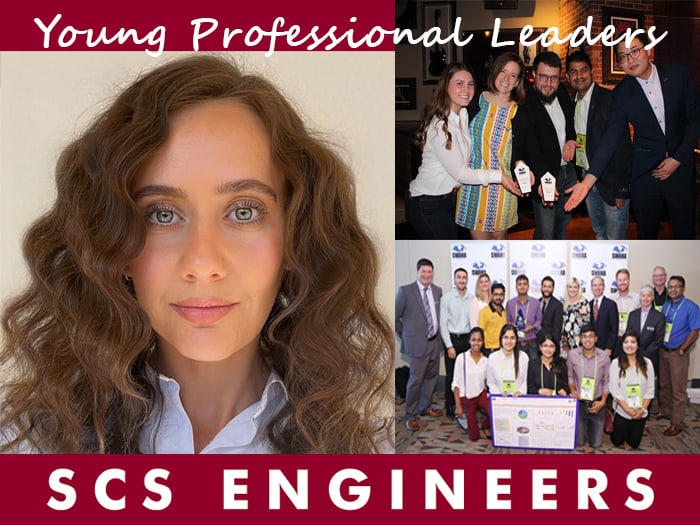
Most seasoned professionals understand that industry organizations can be impactful in providing opportunities for continued education, business development, networking, and personal and professional growth. Here’s one young professional’s story at an environmental firm that shows the value participation in industry associations and organizations brings to careers.
Leading the way
Mateja Vidovic Klanac, Project Professional in SCS’s West Palm Beach, Florida, office, is a perfect case study of the steps needed to gain industry knowledge and immerse yourself in your career.
After working in the air quality sector for two years in Croatia, Mateja came to the United States and joined a research team led by Dr. Daniel Meeroff at Florida Atlantic University. She was investigating effective odor control strategies to assist landfill site personnel in managing daily operations based on the weather conditions.
With this exposure, she developed a keen interest in the solid waste industry and shifted her focus away from air quality. Mateja says, “It was important for me to expand my experience and connect with other professionals in the industry to broaden my horizons.”
“I had never considered working in the solid waste arena before, but that’s when I discovered how interesting and interdisciplinary it is — where my work could positively impact the environment and my community the most.”
She sought a position as president of the joint chapter of a multidisciplinary group which included the Florida Water Environment Association (FWEA), American Water Works Association (AWWA), Solid Waste Association of North America (SWANA), and Air & Waste Management Association (A&WMA) to learn more about solid waste, network, learn, and grow her professional career. During her time as president of the chapter, this joint association at Florida Atlantic University became a more active organization with a mission to promote interest in the environment and the industry.
When Mateja joined SCS Engineers, she was pleasantly surprised to learn that the company supported and encouraged her involvement in these organizations. “SCS sees the value in my leadership position at SWANA. They support my career and learning goals, but it also aids in recruiting and promoting our company culture as we support young professionals looking to learn and contribute.”
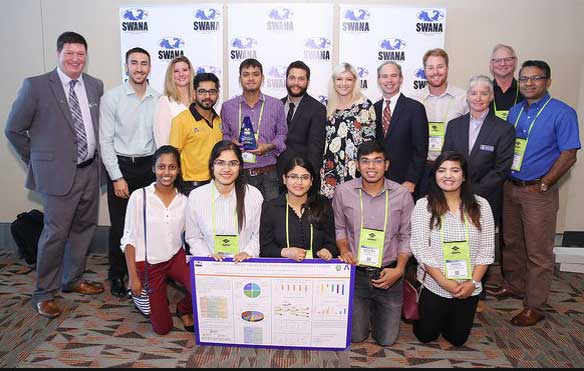
SWANA Student YP Design Contest
Mateja is also a member of the SWANA Young Professionals (YP) Steering Committee and has been the chair of the SWANA YP International Solid Waste Design Competition for several years. The SWANA Design Competition offers students opportunities to work on real-world waste management challenges in a supportive and fun environment. The competition strives to prepare students for similar issues they may encounter after graduation working as engineers or solid waste professionals.
Mateja’s leadership has inspired young professionals to become more involved in solid waste engineering and even moved graduating students to apply for open positions at SCS and become part of the team. “Being involved in SWANA provided a pathway for sharing ideas and challenges with other professionals in the industry while providing students with an opportunity to display their talents and establish a premier networking event where they can connect with potential employers.”
Mentorship
She has also inspired a colleague, Alex Stege, a Senior Project Advisor and 33-year veteran of SCS. He has volunteered his time alongside Mateja for the past two years. “Mateja asked me to assist with the YP design contests because it was specific to my area of expertise; landfill gas (LFG) modeling. I have been leading the SCS non-regulatory LFG modeling practice for over 25 years.”
Alex was critical to the competition because he helped participants understand different methods for estimating LFG generation and emissions. He suggested they evaluate LandGEM and the alternative LFG models derived from their academic research using site-specific waste disposal and LFG recovery data.
Mateja is grateful for his involvement. “Last year, the topic was evaluating the limitations of EPA’s LandGEM and developing an alternative method for estimating landfill methane emissions,” she says. “We chose the topic because of its importance, occurrence in recent industry news, and relevance to climate change.”
“Recognizing this subject matter required Alex’s expertise, I reached out, and he was more than willing to help on the technical side to develop the problem statement and serve as one of the judges. I appreciate the time and effort that Alex contributed to the success of this event.”
Mateja appreciates mentoring others and engaging with colleagues through SWANA. But, more than that, she managed different projects and people to gain exponential leadership experience. For that, the dividends to SCS and Mateja are incredible for the long term.
“She put more work into organizing and directing the design contest events over the past several years than we can appreciate. Besides the meetings and administrative arrangements needed to make the event happen, Mateja developed the design contest problems, including an excellent and timely one this past year,” said Alex.
SCS encourages employees to take on leadership roles if they join a professional organization. The exposure to new ideas, mentor opportunities, and networking is instrumental in growing and sustaining a successful career in engineering – and beyond.
If you want to learn more about the YP program or become more involved in SWANA, contact Mateja or visit Young Professionals (swana.org).
Additional Resources for YPs:
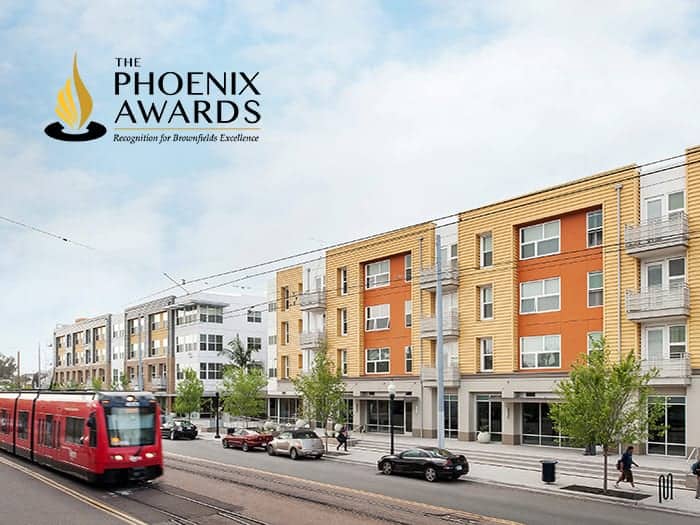
COMM22, a master-planned, mixed-use development project on a former brownfield, receives the 2023 Phoenix Award as an outstanding development on a revitalized property. The national premier awards program for brownfield redevelopment reflects the progression of brownfield redevelopment over decades and recognizes extraordinary practitioners and projects such as COMM22.
SCS Engineers will be at EPA’s Brownfields 2023 Conference to accept the award on behalf of the COMM22 team. The COMM22 development is the result of a collaboration between BRIDGE Housing and the Metropolitan Area Advisory Committee on Anti-Poverty (MAAC) in partnership with San Diego’s Unified School District as a public-private partnership.
“The COMM22 team is honored by the Phoenix Award. Many partners are part of transforming this once-underutilized school district site into transit-oriented affordable housing connecting people to jobs and services. I am pleased to thank them all. Our mission at BRIDGE Housing is to strengthen communities and improve the lives of our residents, beginning – but not ending with affordable housing. COMM22 is an excellent example of the collaboration and creativity required to address a housing crisis of the magnitude we are facing. On behalf of BRIDGE and the entire COMM22 team, it is my pleasure to extend our appreciation to the organizers of the Brownfields conference and the Phoenix Award.” said Jeff Williams, director of development for BRIDGE Housing.
The COMM22 team took an abandoned and contaminated property in a mixed residential and commercial neighborhood to create a thriving hub of residences reinvigorating the area and providing stable homes for hundreds of low-income individuals, elders, and families.
Brownfield revitalizations have grown substantially with public, private, and nonprofit practitioners nationwide who depend on brownfields as a strategic function of planning, economic development, environmental quality, and community development. The COMM22 project, for example, provides over 200 affordable housing units, 13,000 square feet of commercial space, a 4,200 square foot child care facility, and 11 affordable for-sale townhomes in San Diego, CA.
The affordable housing units are separated into 70 senior housing units and 130 family housing units. Paseo at COMM22 Family Housing in Logan Heights has 130 apartment units, 13 serving youth eligible for supportive services on a referral basis. The remaining units are available to low-income families and individuals.
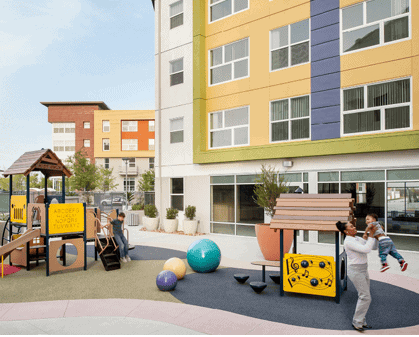
Victoria at COMM22 offers 70 affordable housing units for seniors 62 and older. Victoria has 40 studio, one- and two-bedroom apartments with affordable below-market-rate rents and 30-one-bedroom apartments with HUD subsidized rents.
SCS Engineers’ role in supporting the environmental conditions at the site spans over ten years, including environmental assessments, waste characterization, mass grading, and design and implementation of a successful remediation program; thus delivering housing that supports both the social and business goals of the development team and the community.
“The technical issues were challenging, but it’s amazing to see the transformation of vacant lots into vibrant housing that anchor the neighborhood,” says Dan Johnson, SCS Engineers vice president. “We are proud to be able to provide the highest level of environmental and regulatory support for the community.”
The completed COMM22 housing development is a transformational project that has brought tangible benefits to its residents and the entire community. What was once an abandoned, contaminated property is now a thriving cornerstone for the whole neighborhood and a model for transit-oriented infill development and affordable housing with a noticeable increase in the quality of life and a palpable pride of ownership.
Additional Resources
Hear from SCS Engineers professionals at the Utility Solid Waste Activities Group SPCC Workshop, August 29-30, at the Grand Hyatt Washington Hotel in Washington, D.C.
Description: Jared and Spencer will discuss common issues observed while preparing and reviewing SPCC Plans for electric utility facilities. They will include content applicable to different types of facilities (power plants, substations, storage yards), and cover some different types of SPCC activities (inspections, 5-year reviews, secondary containment, etc.).
We hope to see you there!

Carbon capture and storage (CCS) enables industry and manufacturing to reduce greenhouse gas footprints by up to 2 million metric tons annually, for decades. It’s a great time to learn how this technology works, how it can help you, and what the overall lifecycle of a CCS project looks like. In this chapter, Kacey Garber and Candy Elliot step through best practices based on project experience, regulations (in this example Illinois), and the compilation and submittal of permit applications. You’ll learn about:
Your business does not have to be in Illinois to learn from these educational, non-commercial webinars. Transform how industry leaders like you manage greenhouse gas as a byproduct of modern life.
Helpful Basic Tips:
Early planning and mindful project scoping are critical for a CCS project to understand and communicate the project’s needs, objectives, goals, and conceptualized design. Use site characterization data and have a good handle on the operational parameters to develop a good first model and initial area of review delineation. The monitoring system design should then be tailored based on those data. Use the baseline and operational monitoring data to calibrate the model and refine your area of review delineation.
Early financial planning is also important and should include long-term operations and monitoring. Spend rates will be variable throughout these projects and highly dependent on the project’s phase.
The site geology is a key factor — we highly recommend conducting a feasibility study before beginning a project to assess the suitability of Class 6 injection at the proposed location. In addition, when the permit process begins, it’s important to front-load the site characterization efforts to minimize the uncertainty surrounding your site suitability.
Proactive stakeholder engagement surrounding your project is more likely to help lead your project to success. Developing outreach plans help open and facilitate lines of communication with stakeholders, regulatory officials, and public and environmental advocate groups.
Use an iterative project approach – permitting is not a cookie-cutter but a site-specific process. Your early and thorough planning steps help create a feedback loop that will go on throughout the project’s life. It enables flexibility in implementing your approach.
 Kacey Garber is an experienced groundwater project manager for active and closed industrial clients, including routine groundwater monitoring and statistical analyses; reports and permit applications; designing sampling and analysis plans; special groundwater studies; and conducting groundwater well construction planning and design. She has also been involved in PFAS work groups and publishes on the topics of UIC and geologic sequestration. Ms. Garber has a Masters degree in Geoscience.
Kacey Garber is an experienced groundwater project manager for active and closed industrial clients, including routine groundwater monitoring and statistical analyses; reports and permit applications; designing sampling and analysis plans; special groundwater studies; and conducting groundwater well construction planning and design. She has also been involved in PFAS work groups and publishes on the topics of UIC and geologic sequestration. Ms. Garber has a Masters degree in Geoscience.
The North Carolina Chapter of SWANA (NCSWANA) is hosting its 2023 Fall Conference at The Cherokee Convention Center in Cherokee, NC, October 16-19.
The 1st Annual Garbie Awards will be presented to honor those individuals and organizations who have excelled and enhanced the field of Solid Waste Management in North Carolina.
The planning committee is preparing an engaging agenda of technical sessions, excellent networking opportunities, and a bowling tournament.
Click for more conference details and registration information
We hope to see you there!
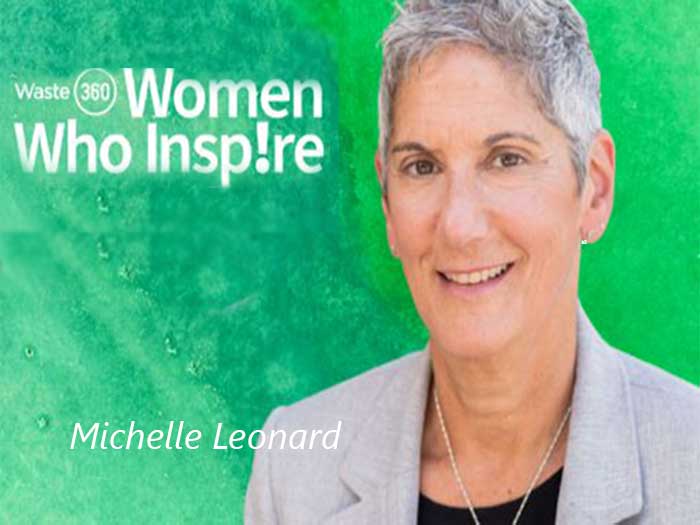
Meet Catelyn Scholwinski, SMM Director, and Stephanie Watson, SMM Vice Director, during an hour-long webinar where we’ll chat about how they got to where they’re at today, their advice for young professionals, and their predictions for our industry. Come ready to ask questions and get to know who is leading the SWANA SMM Technical Division!
SWANA has Technical Divisions that focus on specific solutions for the waste industry. Sustainable Materials Management (SMM) is a very important one. The Division has an upcoming event that is a great opportunity for young professionals interested in more sustainable reuse, recycling, and resource management.
![]()
SCS’s own Kelli Farmer is SWANA’s SMM Young Professional Representative. If you want to speak with the men and women on SCS’s Sustainable Materials Management teams, please get in touch with us at .
SCS Engineers is leading the charge to sustainable materials management through innovative policies, programs, and infrastructure that increase diversion, reduce contamination, recycle more materials, and manage costs. SCS offers comprehensive services to assist in achieving your SMM goals and reducing your carbon footprint. We offer technical expertise and the financial, regulatory, and educational skills to develop cost-effective and sustainable programs.
Meet Catelyn Scholwinski, SMM Director, and Stephanie Watson, SMM Vice Director, during an hour-long webinar where we’ll chat about how they got to where they’re at today, their advice for YPs, and their predictions for our industry. Come ready to ask questions and get to know who is leading the SWANA SMM Technical Division!
SWANA has Technical Divisions that focus on specific solutions for the waste industry. Sustainable Materials Management (SMM) is a very important one. The Division has an upcoming event that is a great opportunity for young professionals interested in more sustainable reuse, recycling, and resource management.
![]()
SCS Engineers is leading the charge to sustainable materials management through innovative policies, programs, and infrastructure that increase diversion, reduce contamination, recycle more materials, and manage costs. SCS offers comprehensive services to assist in achieving your SMM goals and reducing your carbon footprint. We offer technical expertise and the financial, regulatory, and educational skills to develop cost-effective and sustainable programs. SCS’s own Kelli Farmer is SWANA’s SMM Young Professional Representative.
If you are interested in an environmental career that can impact climate change for the good – this is it! Many types of positions are open now.